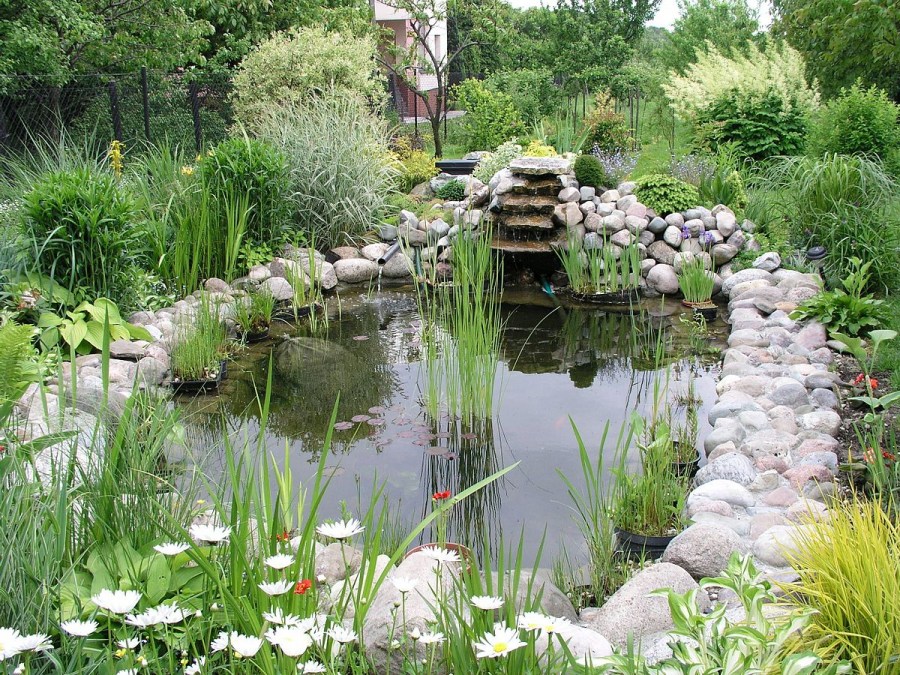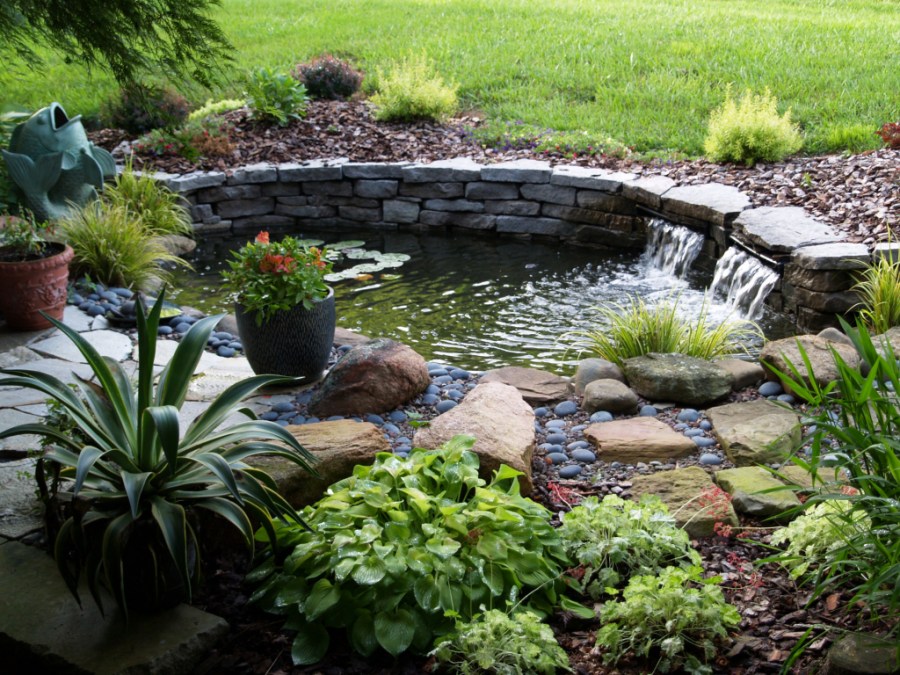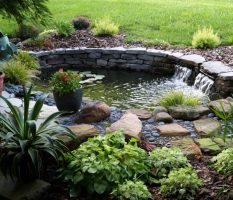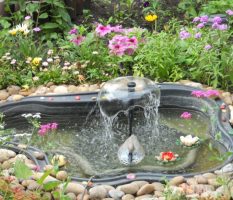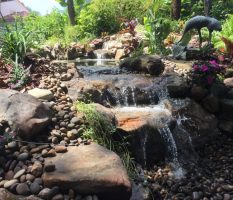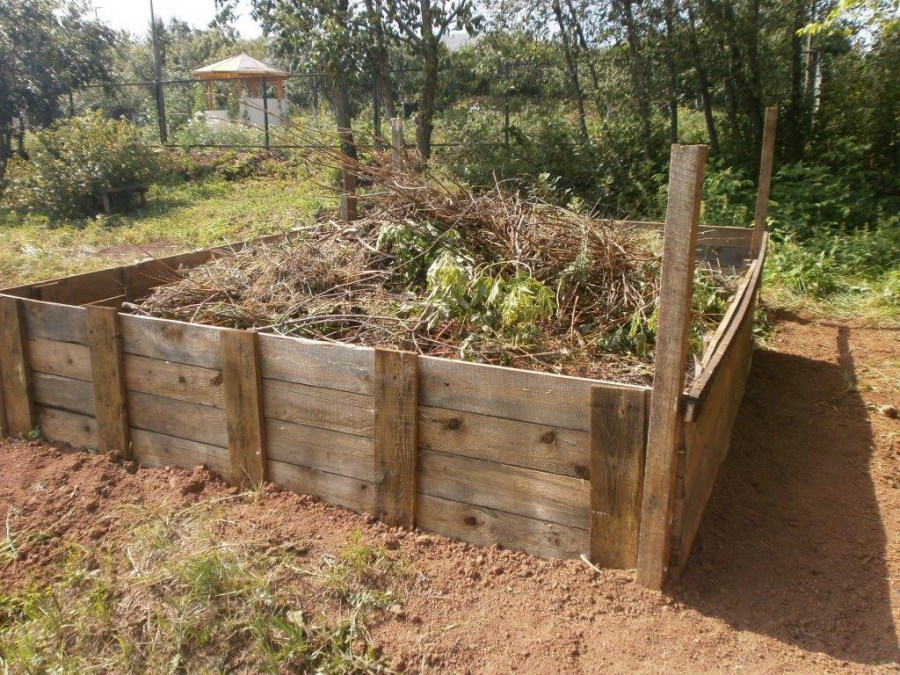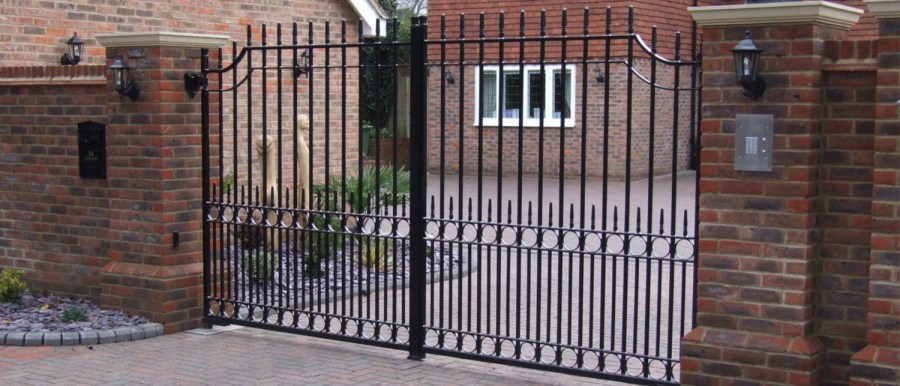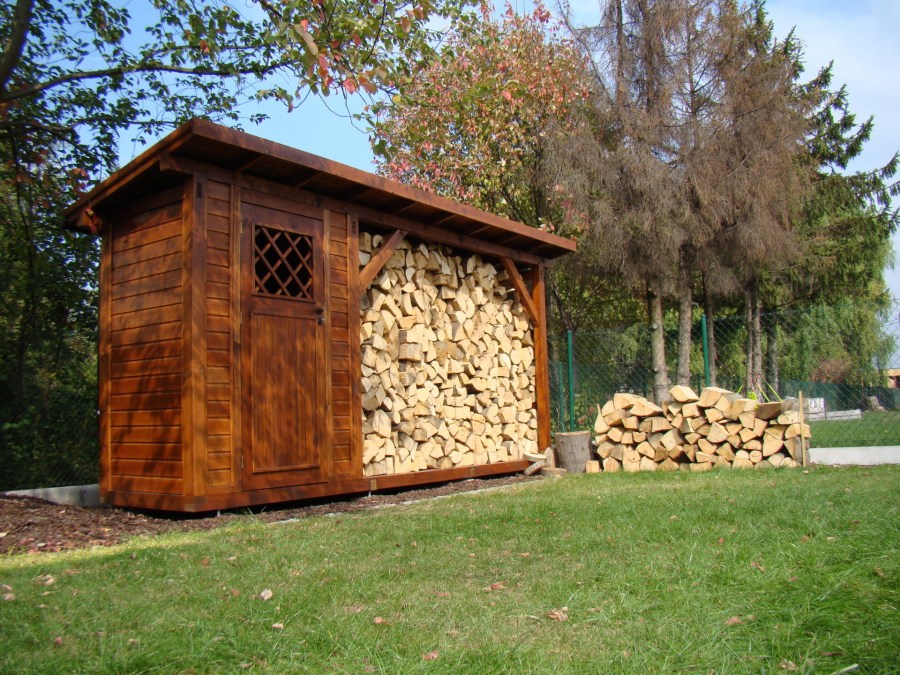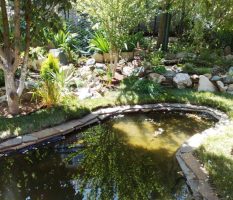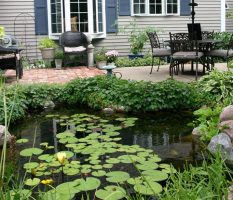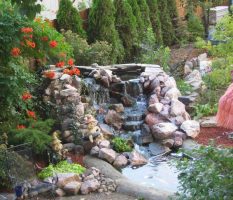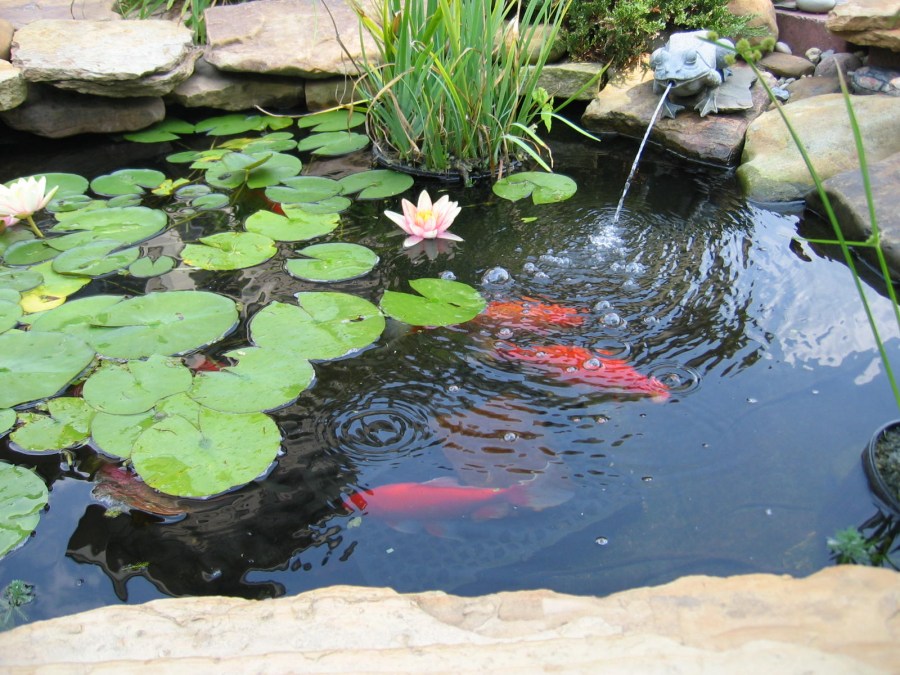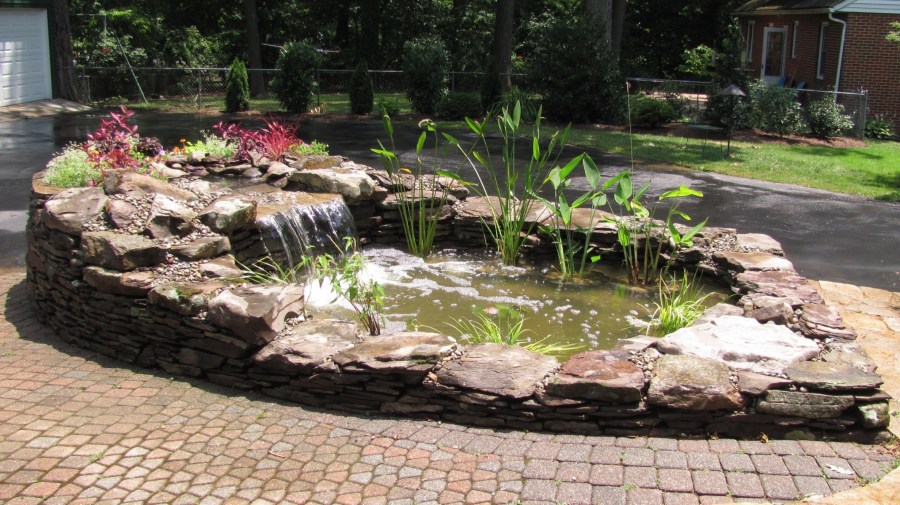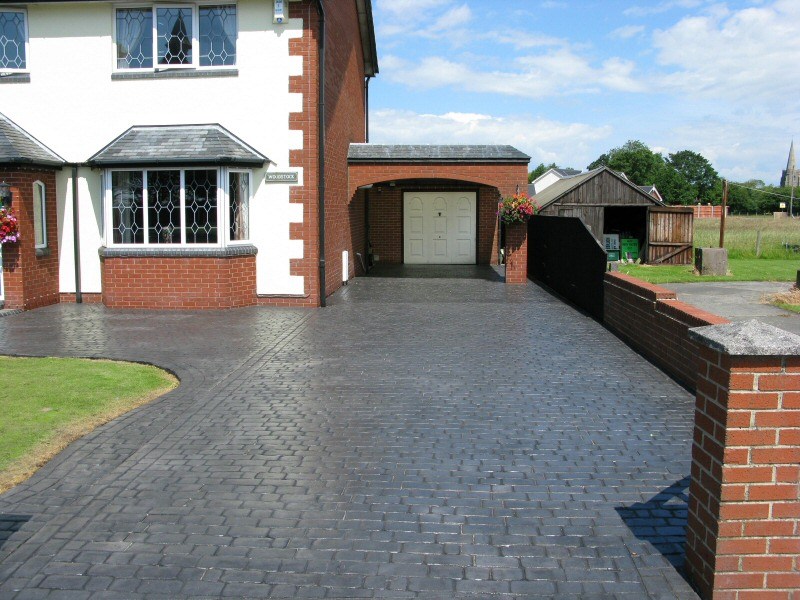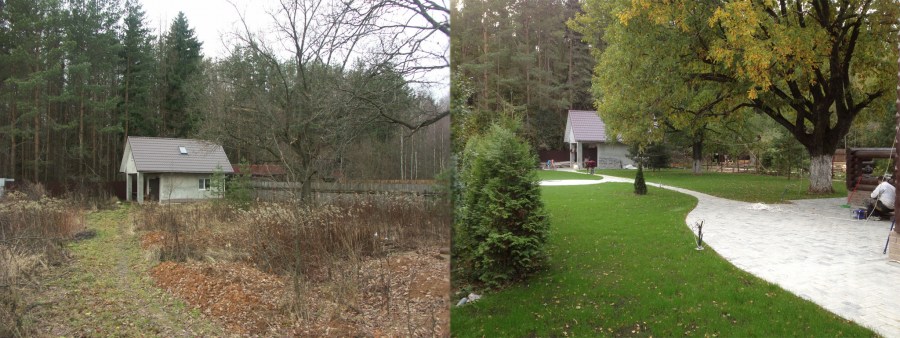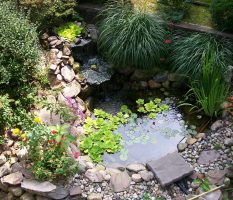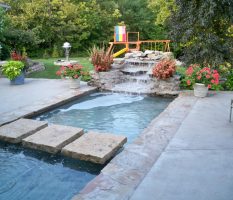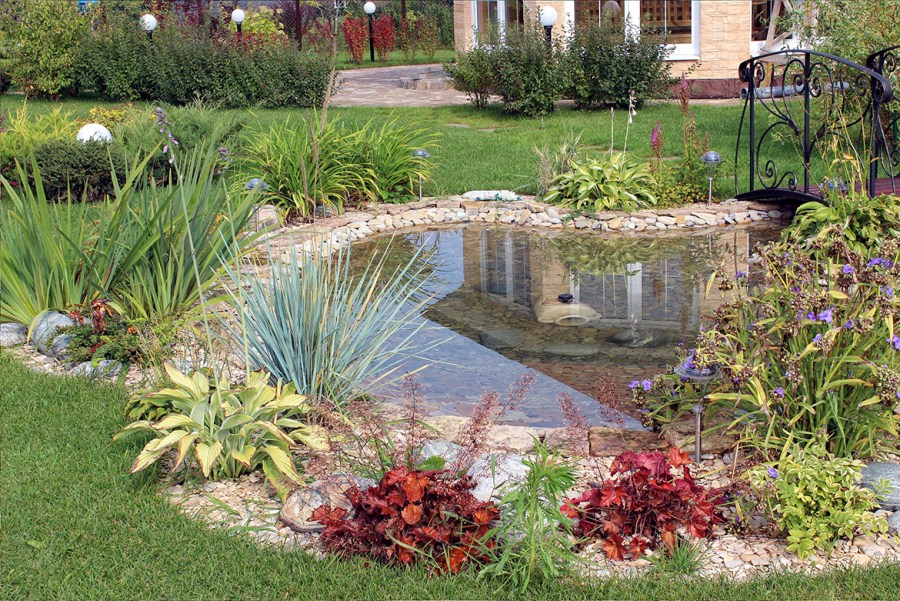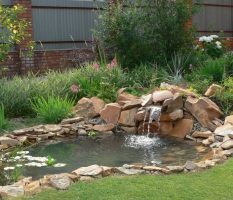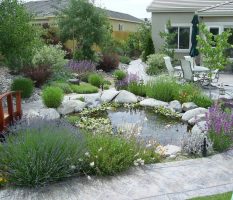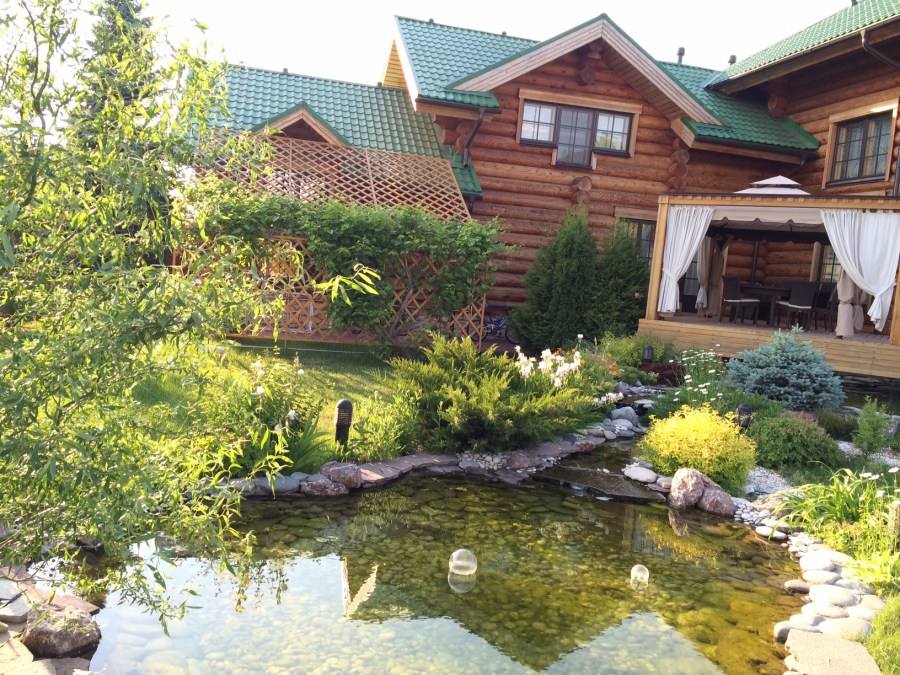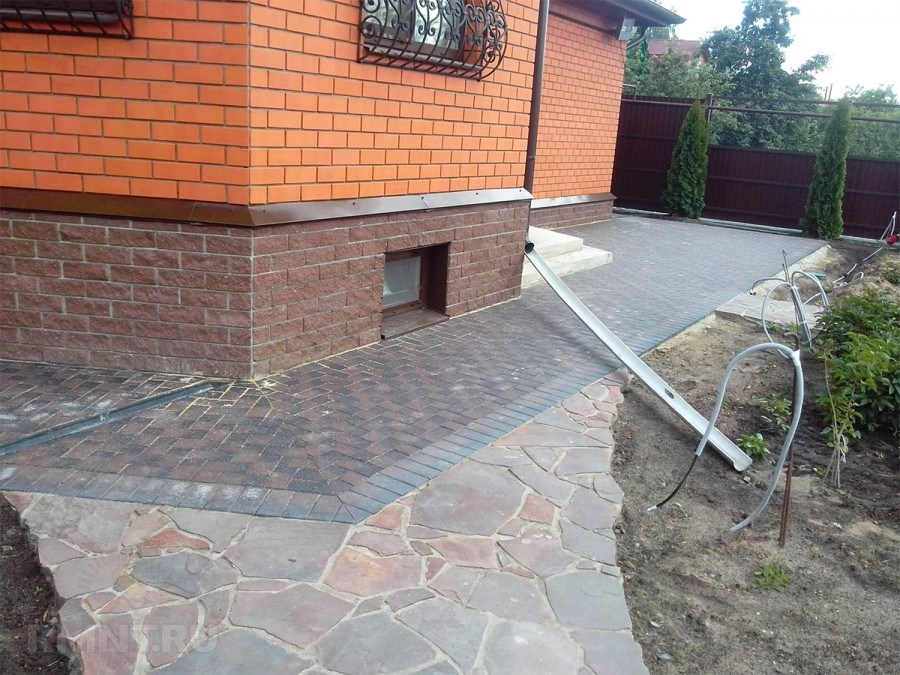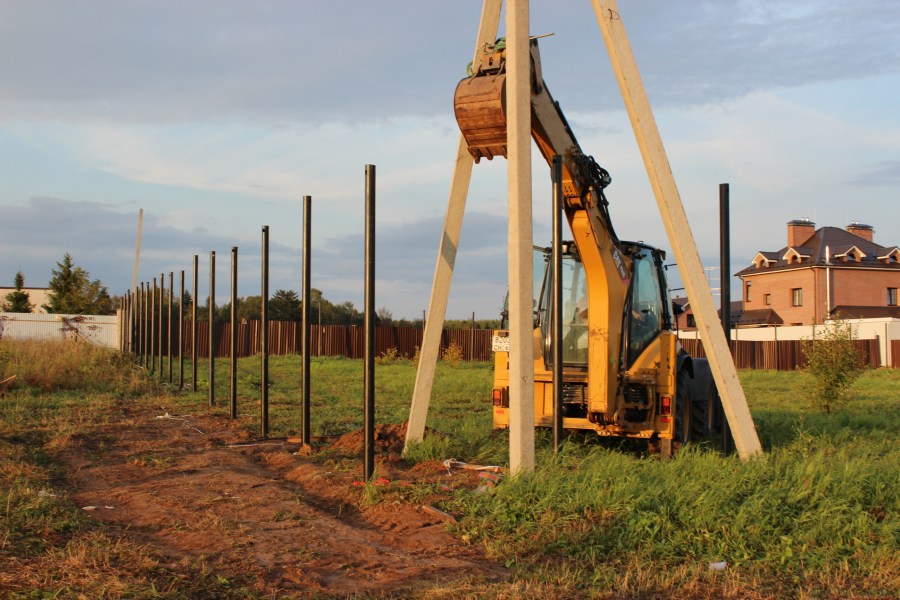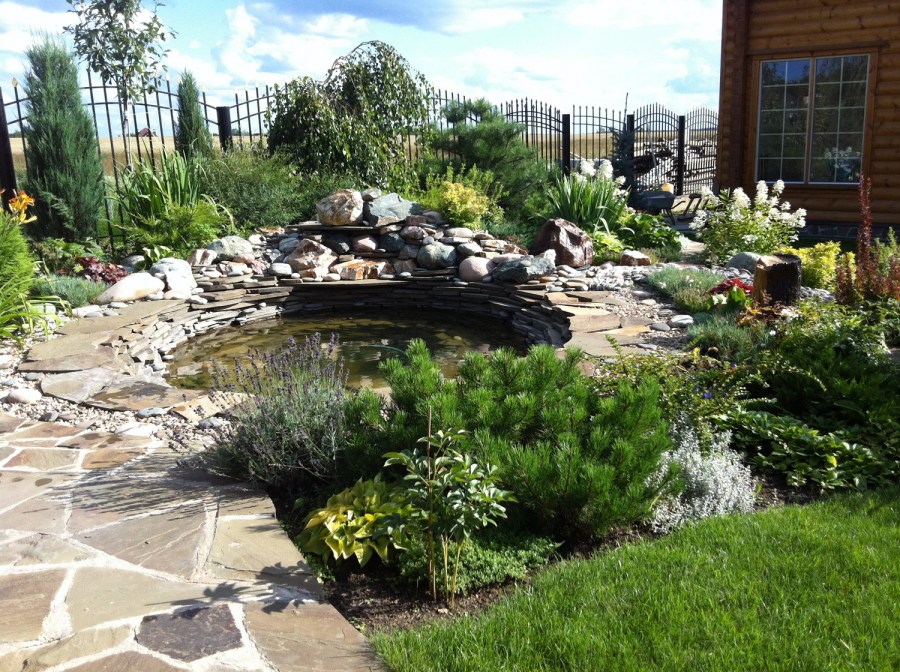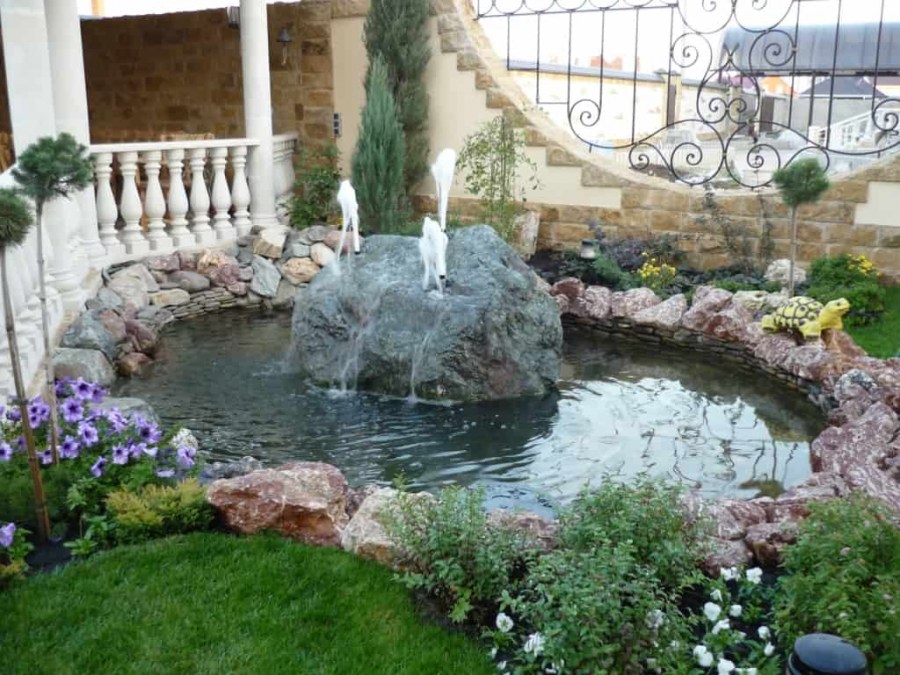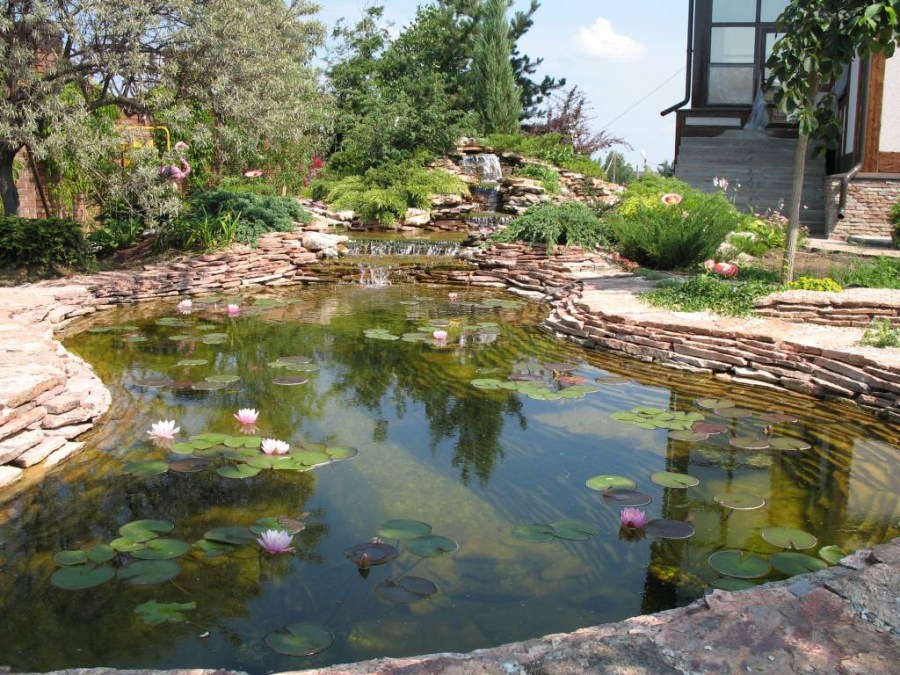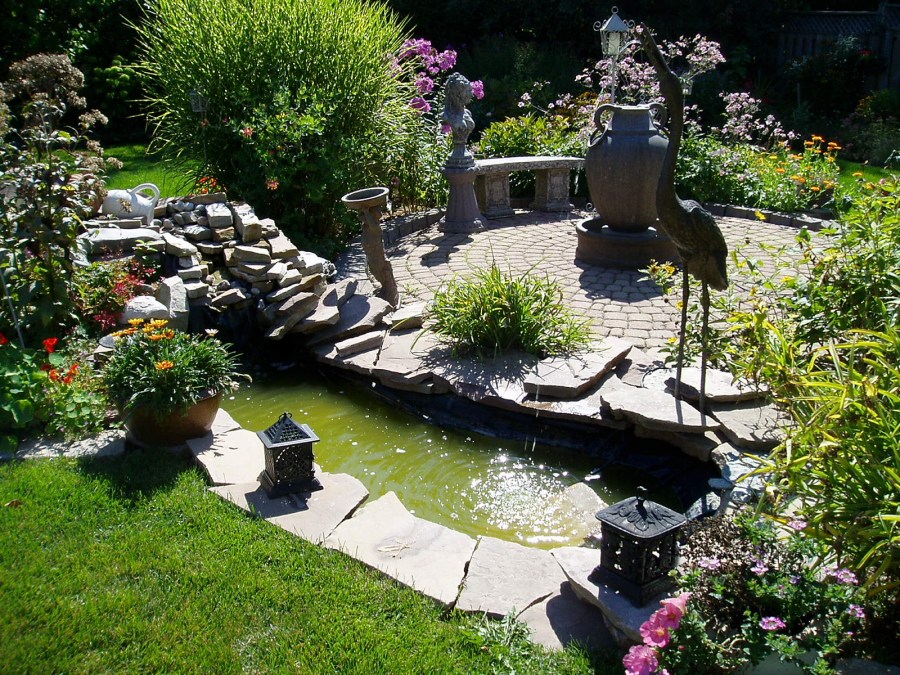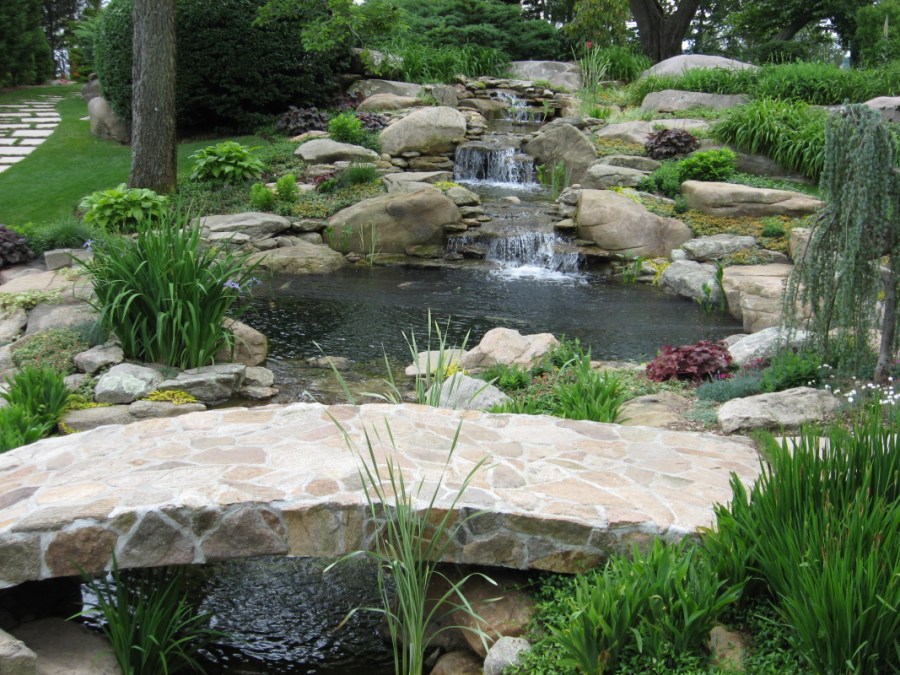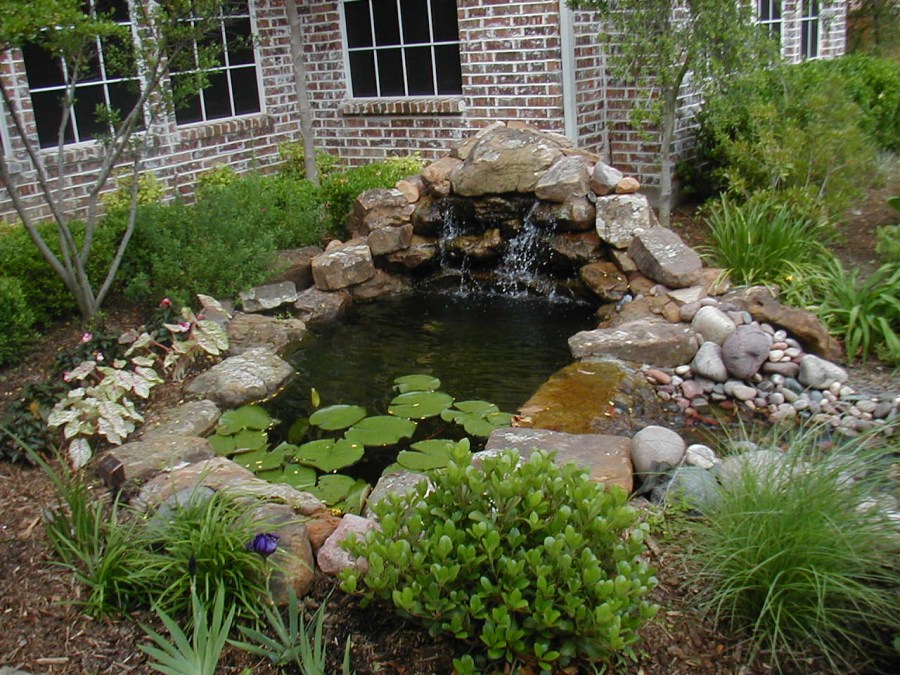Decorative pond - do-it-yourself zest building of any garden (90 photos)
A small artificial pond will be a magnificent decoration of the garden and a favorite vacation spot for households. Relax under the murmur and splash of water, admiring the flowering plants - what could be better?
Everyone can make it independently. In the vastness of the network you can find not only photos of decorative ponds, but also detailed workshops on creating a pond of any shape and size. You just have to decide on its location and get to work!
Seat selection
Finding the optimal location for the future pond in the garden is an important stage in the design process. Despite the fact that it will perform an exclusively decorative function, a natural ecological system should be organized around it to prevent its transformation into a swamp.
However, being near deciduous trees will lead to the fact that in the fall the pond will be covered with a layer of fallen leaves.
Light is needed for plant growth, so make sure that the selected location receives enough light. At the same time, it should not be too much.
In the heat, the water in the pond can overheat, which stimulates the active reproduction of algae and negatively affects other inhabitants of the pond. Ideally, the sun's rays should fall into the pond in the first or second half of the day, but at least five hours a day.
Well, if there is an unused slide on the site: the greater the slope of the relief, the more spectacular the result. This is an ideal place to form a cascade.
On the other hand, the location on lower sections will allow you to more fully enjoy the beautiful view, and the sun will dry it more slowly.
Another advantage of the chosen place will be a beautiful reflection in the water, for example, surrounding plants or decorative objects.
The type of soil imposes its limitations on the design of a decorative reservoir. Loamy, clayey and peaty soil are the most suitable options. Chernozem promotes the formation of silt. The organization of a pond on acidic soil must necessarily include protection of the side walls and the bottom.
Design choice
Decorative pond does not have to be a pond. Creating a small fountain or artificial waterfall will take a little more time, but the result will be worth it.
A decorative pond is the simplest and most versatile type of pond, suitable for almost any site. The abundance of plants, including aquatic ones, will help to emphasize its purpose. Show your imagination by creating amazing compositions that catch your eye.
Streams and cascades are most effective in relief areas. The water in them is constantly moving, and the cascade due to the steps resembles a small waterfall with a characteristic noise. On a flat area you can organize a channel. The flow of water in it is slower, and it is wider. Do not forget that the water in such reservoirs gradually evaporates, watch its volume.
An interesting solution is to create a small swamp. Its depth usually does not exceed 30 cm. An excellent option for low and humid areas. In this case, you don’t even have to make an effort: Dig a hole of a suitable shape and depth and wait until it is filled with water itself. You need to decorate the swamp with bog plants.
An even more miniature pond is called a “swamp bed”. Its depth does not exceed 10 cm. According to its name, it is filled with decorative shallow and coastal plants. "Flowerbed" can be issued in a container of fireclay or wood with waterproofing. A concrete tank with an interesting texture will look stylish.
The fountain can act as an independent reservoir or be installed in the existing one. There are submersible and floating models. Original fountains in the form of figures of animals, people and others will be a magnificent decoration of a reservoir in the country. Caution: A water-spraying fountain can damage aquatic plants.
There is no water in the “dry” pond: it is replaced by other means, among which there may be plants and even stones. An “alternative” to water will be inexpensive and lightweight black polycarbonate. Here you can and should experiment: a “stream” of pebbles, a “lake” of flowers, a “pond” of plastic wrap.
Blue flowers (ageratum, salvia, forget-me-not, bells, etc.) will help simulate water. Drop them off so that you get "waves." Finish the composition with shells and pebbles. An interesting addition will be a small bridge.
Size and shape selection
Of course, the larger the pond, the more spectacular it will look. There is a small rule: it should occupy at least 1/5 of the area of view. Take a look at the most comprehensive view.
It is impractical to choose an area of less than 3 m2, since it will not cause natural water purification. However, if the water is in motion, this rule can be omitted.
Depth up to 50 cm is considered shallow. A minimum of 80 cm is required if you want to fish in a pond. An ice-free pond (which does not require draining water for the winter) should have a depth of at least 1.2 m.
It is better to choose a form based on the style of the garden. A round pond is suitable for the English landscape. Regular style implies geometric shapes, and irregular ones fit the oriental style: Chinese or Japanese. The main thing is that it complements the landscape, and does not contrast with it.
Materials
For a small reservoir (up to 5 m2), plastic bowls are often used. Install it is not difficult, and it will serve for a long time. The disadvantage of the finished bowl is the shape and small volume invented by the manufacturer for you.
Waterproofing film is suitable for those who create a pond on an individual project.
Polyvinyl chloride, aka black PVC, is the most common option. Its plus - it is easily repaired by ordinary glue.
Polyethylene is cheaper, but less elastic and durable. You can fix it with a self-adhesive tape.
The thickness of the butyl rubber film is selected based on the depth of the pond. If it is less than 80 cm, the thickness may be 0.8 mm, otherwise 1.2-1.5 mm. It is easy to mask the excess edges along the coastline with ordinary stones.
The geometric pond is conveniently located in a concrete pit. The disadvantage of this choice is the complexity of the installation, requiring experience with concrete.
Photo of a decorative reservoir
Terrace in the country - how to create and decorate an important element of the house? (130 photos)
The best flowers for giving: 105 photos of beautiful and simple ideas for the design of the site
Gladiolus in the country: reproduction, care, description, 90 photos of a flower
Guelder-rose: useful properties and contraindications. Recipes and recommendations.
Join the discussion:












